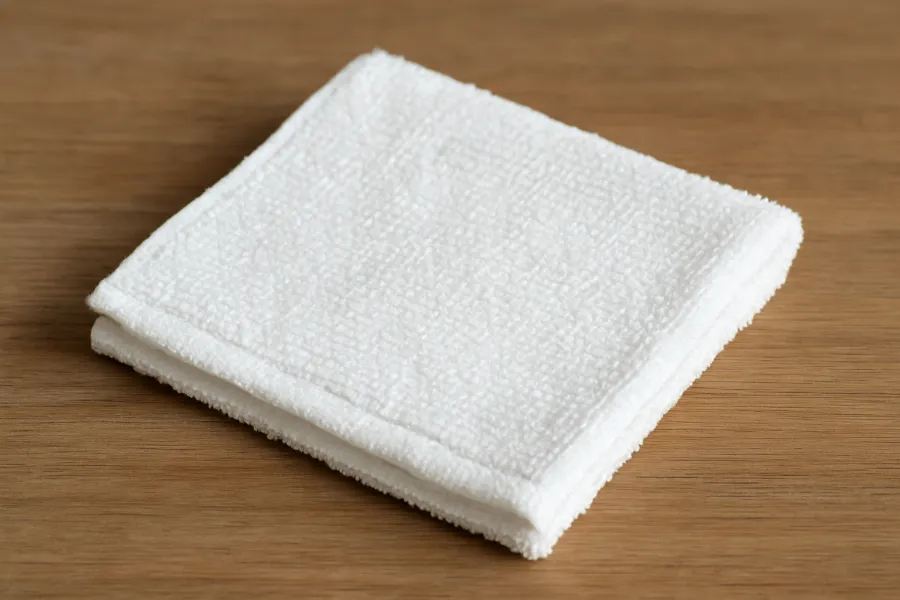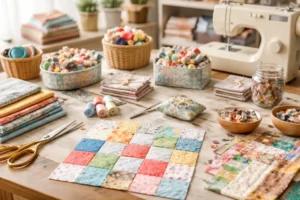
When I first switched from paper towels and sponges to a reusable dish cloth, I didn’t expect to get hooked — but here I am, writing about it. That little cloth has quietly transformed how I clean, how much waste I produce, and even how I think about kitchen gear. If you’re curious about making a greener, smarter swap — or just want to cut down on how often you repurchase cleaning stuff — you’re in the right place.
Let’s dive into all the fun, messy, and practical stuff around reusable dish cloths — and how they compare (and sometimes clash) with things like wash cloths, bamboo scrubs, and eco-friendly alternatives.
Swedish Dish Cloths
I’ll admit it: when I first heard “Swedish dish cloth,” I thought it was a fancy marketing gimmick. But after months of use, I get it. Swedish dish cloths are these hybrid cloths made from around 70% cellulose and 30% cotton — they combine the absorbency of paper towels with the reusability of a sponge. Many claim one Swedish dish cloth can replace up to 15–17 rolls of paper towels.
What I love:
- They soak up a ridiculous amount of liquid (seriously — more than you’d expect).
- Dampen them, use them like you’d use a paper towel or sponge, then rinse, wring, and set them to dry.
- Toss them in the dishwasher or washing machine occasionally to refresh them.
- At the end of their life, they’re compostable (since they’re made of natural fibers).
In practice, I keep two or three in rotation. While one is in use, the others dry (they dry quickly!). When one starts to show wear, I compost it, and the rest keep trucking.
Eco-Friendly Cleaning Cloth
“Eco-friendly cleaning cloth” is a broad term, but for me it’s shorthand for “anything reusable, low-waste, and durable.” Your reusable dish cloth is one type of eco-friendly cleaning cloth. But you can expand your roster:
- Swedish dish cloths (just discussed)
- Microfiber kitchen cloths
- Bamboo wash cloths
- Cotton yarn dish cloths (knit, crocheted, or woven)
All of these try to reduce single-use waste (paper towels, disposable wipes) and stretch the life of what you put in your kitchen. The trick is choosing one (or a few) you like — the ones you will actually use — and caring for them well so they last.

Face Cloth
I use a face cloth every night — gentle cotton or bamboo stuff that feels soft on my skin. Here’s where things get interesting: I used to wonder whether I could also use it in the kitchen for light tasks. But over time I realized mixing them is a fast track to cross-contamination (ew).
So now, my face cloth is purely for my skincare routine. It’s not for scrubbing counters or drying mugs. I recommend you treat yours the same: keep face cloths in the bathroom closet, far from the sink.
Wash Cloth
“Wash cloth” is a more general term, often for bathing: scrubbing arms, body, kids, whatever. A wash cloth is usually made to be soft, absorbent, and comfortable on skin.
If you try to use it in the kitchen, here’s what usually happens: it picks up grease, food bits get stuck, and over time it starts to smell or thin out. That’s partly because kitchen messes are tougher.
So I’ve learned to keep wash cloths strictly for the bathroom — clean, simple, comfortable — and leave kitchen messes to my reusable dish cloths or other cleaning cloths.
What Is a Wash Cloth
Let’s pause here and define: What is a wash cloth?
- Typically square (around 12” x 12”, though it can vary).
- Made from soft materials like cotton, bamboo, or terry cloth.
- Intended for personal hygiene: washing face, body, children, etc.
- Not designed to tackle greasy stove spills or baked-on pans.
Once I recognized that distinction, it became easier to keep cloths in their “zones” — bathroom cloths stay out of the kitchen, and kitchen cloths stay out of my daily skincare.
Bathroom Wash Cloth
When I refer to a bathroom wash cloth, I’m talking the soft square you use in the shower or sink area. The kind you’d use to wash your face or arms.
These are built for skin comfort, not scrubbing power. So they often:
- Stay soft, even after many washes
- Don’t have heavy texture
- Don’t need to stand up to bleach or tough stains
In my home, every bathroom has a stack of bathroom wash cloths. They never leave that room. And whenever one begins to prematurely thin or smell, I retire it to cleaning rags or compost (if the material allows).
Bamboo Wash Cloth
I’m a big fan of bamboo wash cloths — they feel luxuriously soft, are naturally antimicrobial, and tend to hold up well. For facial use, they have a wonderful silky feel.
They aren’t often used in the kitchen (though some people do for light tasks). But they reinforce a theme: different types of cloths for different jobs. I don’t use a bamboo wash cloth to wipe spaghetti sauce off pots, and you probably don’t want to either.
I keep a bamboo wash cloth for more sensitive tasks (like baby baths), and I love that it fits the “wash cloth” realm but with a greener footprint.
Microfiber Kitchen Cloth
Now, here’s a contender for the kitchen: the microfiber kitchen cloth. I keep one in my arsenal because it does something the others sometimes can’t: give that streak-free wipe on glass, stainless steel, and windows.
Pros:
- Excellent absorbency
- Great for mirror and glass without leaving lint
- Holds up well through wash cycles
Cons:
- It’s a synthetic fiber, so not biodegradable
- It might pick up static or lint if washed with the wrong stuff
In my setup, the microfiber cloth is for final polish — after the dishwasher, after counters, to get that shine. But dirty messes, spills, and greasy tasks? I leave those to my reusable dish cloths (especially the Swedish ones).
How I Use My Reusable Dish Cloth (and You Can Too)
Here’s what works for me — maybe you can adopt part or all of it:
- Rotate at least 2–3 cloths: While one is drying or in use, another is in the wash.
- Rinse after each use: Keeps stains and odor down.
- Occasional deep clean: Toss one into the dishwasher or washing machine weekly.
- Air dry, don’t bunch up: Let it breathe so bacteria don’t linger.
- Replace when it’s losing its edge: When absorption falters or cloth thins, compost or retire it.
Because I treated my cloths well, I’ve gotten many months of use from a single cloth — sometimes pushing 8–9 months depending on brand and wear. That’s something a paper towel or sponge typically won’t compete with.
The Case for the Reusable Dish Cloth
By now, you’ve seen my bias. But it’s backed by what I’ve tested. Here’s why “reusable dish cloth” is a phrase I now preach:
- It drastically cuts how many disposable cleaning products I buy.
- It simplifies — fewer items in the cleaning drawer.
- It reduces waste, especially if you compost or responsibly dispose.
- It holds up well if you take care of it (wash, dry, rotate).
- It can be surprisingly versatile (kitchen, small spills, appliances) — though I still guard it against being used in the bathroom.
I’ve found that once you lean in, you start seeing reusable cloths EVERYWHERE, and you wonder why you ever cluttered your pantry with paper towels.

Final Thoughts
Switching to a reusable dish cloth felt small at first — a modest experiment in my kitchen. But over time, it became a pillar in how I manage cleanups, waste, and even my values. I protect that cloth: rotate, rinse, wash, let it dry.
And while I use microfiber kitchen cloths for certain tasks, bamboo wash cloths in the bathroom, and my face cloths only for skin, none of them do everything. That’s okay. It’s better to have a few good cloths doing the jobs they’re built for than one cloth forced to do it all (and failing).
If you try it, give it a month. See how often you don’t reach for the paper towel roll. That alone was a moment of “aha” for me.
Want me to send you a printable version (with images) or help you pick a brand or DIY pattern? I’d love to help.
FAQs
A reusable dish cloth is used for cleaning countertops, dishes, and spills in the kitchen. It replaces paper towels and disposable sponges.
Cotton yarn is the best choice because it is absorbent, durable, and machine-washable. Alternatives like terrycloth or flannel also work well.
Most households do well with 6–8 in rotation. This ensures you always have a clean one ready while others are being washed.
Rinse after each use, wring out, and air dry. Wash in hot water every few uses, and occasionally sanitize by boiling or microwaving damp.
Yes, with proper care, they can last for months. Sponges break down quickly, while cotton dish cloths maintain structure and absorbency.
Absolutely! Knitting and crocheting dish cloths is beginner-friendly, and you can choose stitches for texture, thickness, and style.
Yes, they reduce paper towel waste and single-use sponge disposal. Choosing organic cotton yarn makes them even more sustainable.













